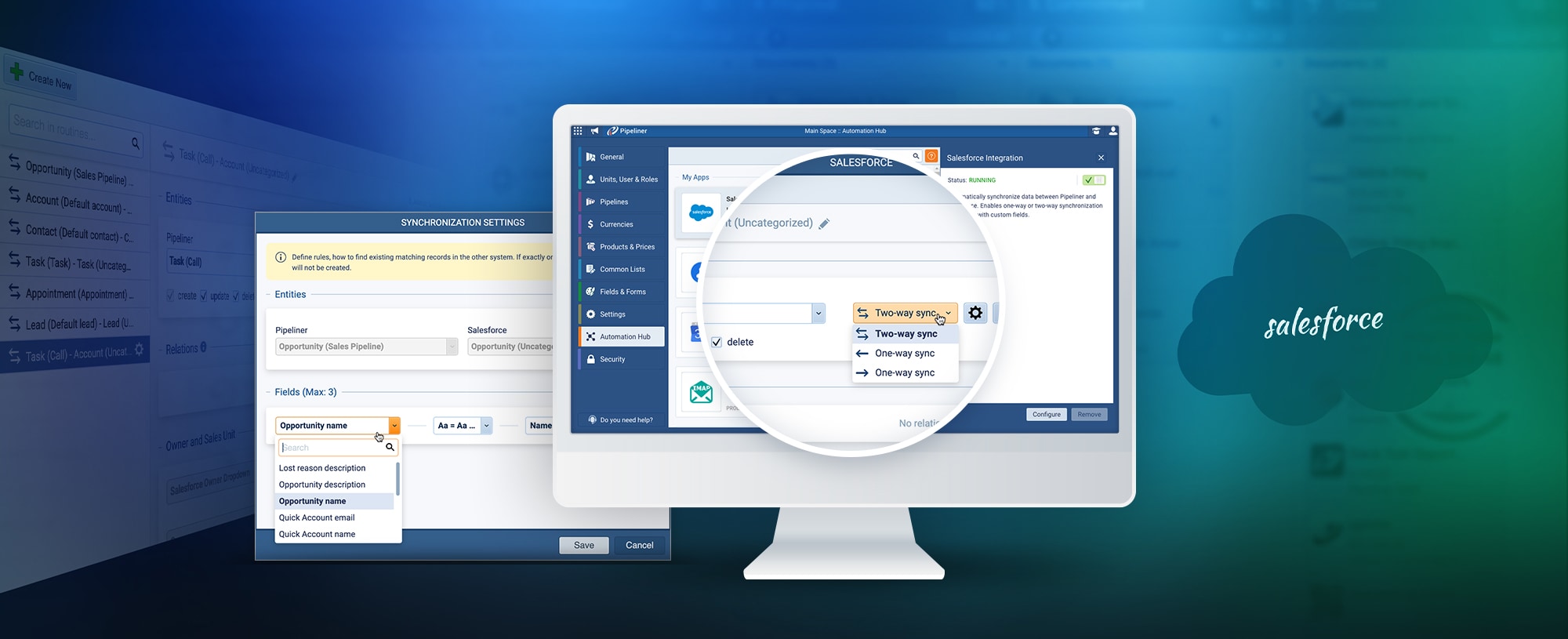For the next article in our CRM adoption series, let’s address a vital topic: the 8 reasons CRM implementations are never actually completed.
1. No Defined Processes
It becomes very easy to blame a certain group or individual when a CRM adoption remains incomplete. But one basic reason is a lack of clear processes. We’ll get into this more in detail further along in this article, but if a company has not detailed the goals and purposes of a CRM, and precisely the route the CRM adoption is going to take, the project will never get completed.
2. Made a Priority by Management
Probably the primary reason for lack of CRM adoption is that such adoption isn’t made a chief priority by company management. If you think about it, CRM is more important than even a company location. For example, today many companies are moving from Germany due to deindustrialization. Let us say we’re on the board of a company seeking a new location. Too many companies would prioritize such a relocation over and above CRM.
CRM, even in such a circumstance, must remain the top priority. Why? It is the repository and the system for customerCustomer Customer is an individual or an organization that purchases a product or signs up for a service offered by a business. dataData Data is a set of quantitative and qualitative facts that can be used as reference or inputs for computations, analyses, descriptions, predictions, reasoning and planning.. If we don’t have accurate customer data appropriately utilized, we will have no customers. If we have no customers, we have no company. We won’t need to worry about moving, as we won’t have a company to move, will we?
3. No Project Leader
If CRM implementation isn’t a top management priority, it seldom happens that someone takes charge of the project.
If a company has a security issue, someone is immediately in charge of resolving it. Why doesn’t CRM have that same kind of priority? If you lose your customers, you lose everything. You need CRM to be effective and efficient; if you aren’t, you’re gone.
It can be the case that a company is overwhelmed, and there isn’t someone who can add heading a CRM project to their workload. In such an instance, the company should—again as a top priority—invest in a consultant to do this job.
It can also happen that heading a CRM project becomes a “hot potato” that nobody wants. They don’t want to be blamed if the project fails. They don’t want to be demoted or fired.
In such a case, the person forced into that position will often go to the CRM industry bestseller as a point of security, which may not even be suitable for their company. They should instead be truly shopping around and evaluating the best solutionSolution Solution is a combination of ideas, strategies, processes, technologies and services that effectively helps an organization achieve its goals or hurdle its challenges. for their enterpriseEnterprise Enterprise (in the context of sales) is a relatively large organization typically composed of multiple levels, locations, and departments which need multi-layer software systems that support collaboration across a large corporate environment..
4. Documented Requirements Are Missing
When a company is in the market for a CRM solution, it will often create a shortlist of systems to look over. That only makes sense, however, when the company has clearly laid out its CRM requirements and put them into a document. How can a CRM project be accomplished if such requirements aren’t clearly established and documented?
In our experience at Pipeliner, we often find we cannot fulfill one particular aspect of customer demands. What are they demanding? That we, free of charge, become their project manager and consult them, informing them of their requirements. Since we’re not inside that company and aren’t intimately familiar with all of its issues, this is impossible.
In an example outside of CRM, let’s look at someone shopping for multiple television sets. They need to connect and set them up, and they expect the company they buy from to perform this service. The company will politely refuse and inform the buyerBuyer A buyer is an individual or organizational entity that purchases a product or subscribes to a service. they need to purchase such a service separately. The company selling them the TV sets may not even offer that service, in which case the customer will have to hire someone else.
We cannot perform such an evaluation for a company’s CRM requirements. The buyer must hire a consultant or otherwise handle it in-house.
I understand that a company might have fears of making the wrong decision. But nailing down these requirements isn’t rocket science—it just requires some patience and homework.
5. Responsibility of Vendor and Buyer
While the company buying the CRM solution certainly has responsibility for nailing down requirements, the vendor actually has responsibility, also. If the vendor doesn’t take that responsibility, that can also leadLead Lead refers to a prospect or potential customer (who can be an individual or organization) that exhibits interest in your service or product; or any additional information about such entity. to the CRM project not being completed.
The vendor must ensure that meetings with the buyer occur at the right times, that there is an agenda, a deadline, and lists of tasks that must be accomplished before the next meeting. If these actions do not happen, the sale cannot move forward. If the buyer invests a considerable amount of funds, and the vendor doesn’t point out a potential waste of money, the fault lies with the vendor.
It can happen that a customer doesn’t have a complete understanding of their needs, and it may be up to the vendor to help them. Let’s say, for example, the customer wants to meet about potential CRM integrations with the company’s systems.
These kinds of integrations are not as difficult as they used to be. In the “old days,” there were no OpenAPIs, APIs in general, or connectors. A number of years ago, my company was a partner with Autonomy, a company that developed pattern recognition software. We required connectors to different databases, and Autonomy had to create them.
Many different APIs are available today. There is even efficient middleware from vendors such as Zapier or Tray.io. Connections are now easy to make.
If a company wants to integrate CRM with its ERP, a vendor must fully understand the customer’s request and actual requirements. If this understanding isn’t fully established, the vendor can’t know the customer’s CRM needs.
A customer may wish to integrate CRM with their ERP system. In such a case, we must ask questions such as, “What kind of integration do you want? Unidirectional? Bidirectional? Daily? Every minute? Does data transfer require approval, or can it be done without approval? Is every salesperson allowed to make changes in CRM that then transfer to ERP?”
If we assume that a customer wishes for daily transference of data from ERP to CRM, that is easily accomplished once the customer has fully defined their data and fields for us. We would then need to know the business requirements. What should the data do?
With these factors understood, we now know, as a vendor, the scope of the customer’s business. We can now analyze the customer’s requirements and present different approaches. It’s then a rapid matter of turning this analysis over to our development. We can then create a test space for the clientClient A client is an entity who pays another entity for products purchased or services rendered. Also called a customer. to test out CRM without conflicting with live data.
There are, as you can see, project leaders on both the vendor and buyer side. If both make it a priority, CRM adoption can be accomplished in a couple of weeks. The customer then has full use of their data.
6. “Too Many Cooks in the Kitchen”
When the purchasing enterprise has correctly prioritized the CRM project, and have committed necessary financial and personnel resources, they will then realize the benefit of CRM. It is then clearly viewed not as a technical problem but one of human willingness.
We can take an analogous example from a recent interview with Charles Duke, one of the Apollo 16 astronauts who went to the moon. The interview covered his specific mission and the whole Apollo program, which I myself covered in an ebook.
When it came to the Apollo missions, NASA had a particular vision and priority. They passed this vision and priority to those who could decide and make decisions on the ground. Those people then made those decisions and executed the mission.
It is often a problem in CRM implementation that there are “too many cooks in the kitchen.” A company must appoint someone who is allowed to make a decision. Put a competent person in charge and let them get on with it.
7. The Approach of Iterations
Note that when you place someone in charge, don’t expect their first try to be perfect. Every step in CRM implementation is an iteration, and you must not expect the first iteration to be perfect—learn from it and make it better with the next iteration.
This idea is borrowed from modern software development. In the old days, there was the classic “waterfall” development method in which programming of the entire requirement was done all at once, from start to finish. To make improvements, programmers had to go back and start again at the very beginning.
Today’s approach is known as Scrum, and it consists of incremental iterations. One iteration is completed, the programmers meet and go over it, and then the next iteration is done. This method created a new boom in the software industry.
CRM implementation will complete much faster if companies utilize the same kind of methodology.
The concept of a software development outsourcing hub represents a significant evolution from traditional methods, offering flexibility and expertise by distributing tasks across specialized teams globally. These hubs enable projects to benefit from diverse skill sets and innovative approaches, often leading to more efficient and creative solutions. By leveraging external talents, companies can adapt more swiftly to technological advancements and market demands, further distancing themselves from the limitations of the “waterfall” method.
8. Out to Infinity
We now come to reason #8. If you turn the numeral “8” on its side, it becomes the symbol for infinity. Because in reality, a CRM implementation, even when brought up to the point of high efficiency and success, will never be truly done. There will always be tweaks and improvements.
As we’ve shown, CRM implementation does not have to be a complex ordeal. A company simply needs to be willing to sit down, learn all about their requirements, document them, and share them with a CRM vendor such as Pipeliner.
P.S. How Pipeliner Implementation Differs
We’ve covered general CRM implementation in the above 8 points. What does Pipeliner do differently?
The Pipeliner difference can be summed up in the engagementEngagement Engagement is the state or process of keeping a specific class of audience (employees, management, customers, etc.) interested about a company or brand and invested in its success because of its perceived relevance and benefits to the audience. between people and our productProduct Product refers to anything (an idea, item, service, process or information) that meets a need or a desire and is offered to a market, usually but not always at a price.. We go the extra mile with the customer to fully address their CRM requirements.
You can see from a recent case study the level of gratitude customers demonstrate for the additional measures, exceptional service and value Pipeliner brings to every implementation.
Learn more from these additional white papers and eBooks by Nikolaus Kimla:





